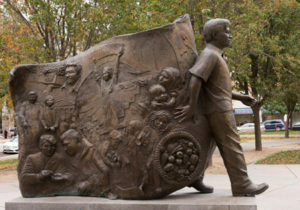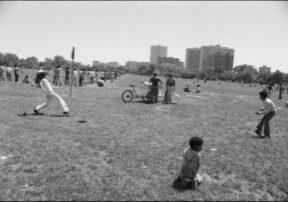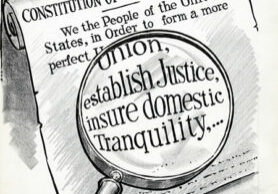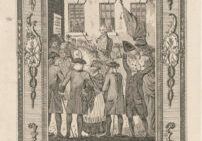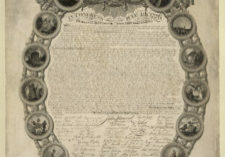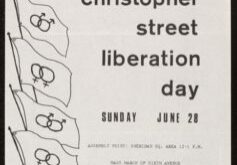Lesson Plans
Suffrage Strategies: Voices for Votes
Students examine a variety of primary source documents related to the women's suffrage movement to identify different methods people used to influence and change attitudes and beliefs about suffrage for women. Students then create original documents encouraging citizens to vote in current elections.
Cesar Chavez & Good Citizenship
Using Cesar Chavez as an example, students read articles, analyze primary sources and create living pictures to consider how good citizens contribute to their communities and work together to affect change.
Teamwork, Community, Culture
Students analyze primary sources to launch an inquiry into teamwork, how community can happen in public spaces between friends, family, and neighbors and the common links between celebrations of culture that we all share.
United States: Biggest Business in the World
Students analyze an historical campaign ad from the 1920 presidential election to consider the purpose and power of political campaign pledges. After, students explore the tactic of comparing the United States to a business both in historical and contemporary contexts.
Preamble to the Constitution Image Sequencing
Students develop their civics vocabulary and deepen their understanding of the preamble to the U.S. Constitution with this primary source image sequencing activity. After, students work together to create a class preamble that describes the purpose and function of their classroom community.
Introduction to the Constitution
In preparation to learn about the rights and responsibilities detailed in the U.S. Constitution and the purpose for its structure of government, students develop their ability to compare and contrast documents and make their own historical interpretations as they complete a close reading of the Preamble. After, students put the Preamble into their own words.
Making a Declaration – Beginning
Students investigate the Declaration of Independence as a founding document of the United States, then consider the historical and contemporary relevance of its most famous phrase and how it relates to a personal vision of the American dream.
Making a Declaration – Intermediate
Students investigate the importance of the Declaration of Independence as a founding document of the United States, then consider the historical and contemporary relevance of its most famous phrase and how it relates to a personal vision of the American dream.
Stonewall: A Building. An Uprising. A Revolution.
Pair the picture book, Stonewall: A Building. An Uprising. A Revolution., with primary sources to have students consider multiple perspectives as they build knowledge of this historic event in LGBTQ+ rights movement. After students can read the summary of the Equality Act, which passed in the House but has not moved out of committee in the Senate, and one or more comments on it published in the Congressional Record. Encourage students who feel passionately about the Equality Act to write to their Senators to share their thoughts.
When Washington Crossed the Delaware
Pair the picture book, When Washington Crossed the Delaware, with primary sources to have students practice close reading of both texts and maps while investigating the events leading up to and following this key accomplishment in the Revolutionary War. After, students can research a current event and create a map based on their learning along with a curator's note that briefly describes its value; create a gallery walk of student work.

